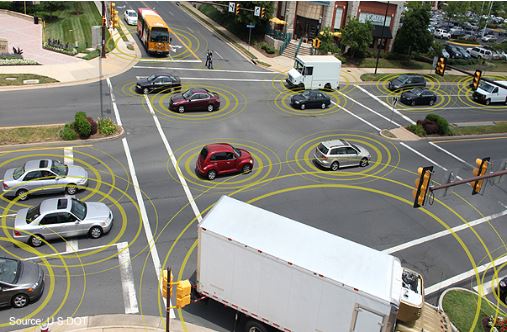
Talking Vehicles On The Horizon
April 17, 2014
In February, the US Department of Transportation (DOT) announced plans to move forward with vehicle-to-vehicle (V2V) communication technology. V2V technology allows vehicles to communicate wirelessly to alert nearby vehicles of their presence. It is felt by the DOT that this technology will go a long way toward preventing crashes on America’s roads.
With V2V technology, cars broadcast their presence, speed, and direction up to ten times a second to other vehicles nearby. If a driver is about to enter an intersection and the vehicle detects another vehicle about to run the red light, the vehicle can warn the driver in time to stop. As envisioned by the DOT, V2V technology, at least in its initial stages, will only provide a warning to drivers that another vehicle is approaching. It won’t provide active controls to stop or steer the vehicle away from a collision. That capability may come later on.
The announcement comes on the heels of a study begun in 2012 in Ann Arbor MI in which 3,000 cars, trucks, and buses were outfitted with the technology. That study, along with years of research suggests to the DOT that the technology “has the potential to help drivers avoid or mitigate 70 to 80 percent of vehicle crashes involving unimpaired drivers, and that could help prevent many thousands of deaths and injuries on our roads every year.”
The DOT gave assurances that the V2V system won’t collect any data on vehicles or their location. The system will only communicate among vehicles and not to any outside source. There were no details on how soon the V2V system will be implemented. Before that can happen, vehicle manufacturers will all have to agree on standards and procedures for installation in their vehicles.
